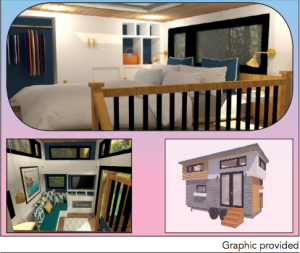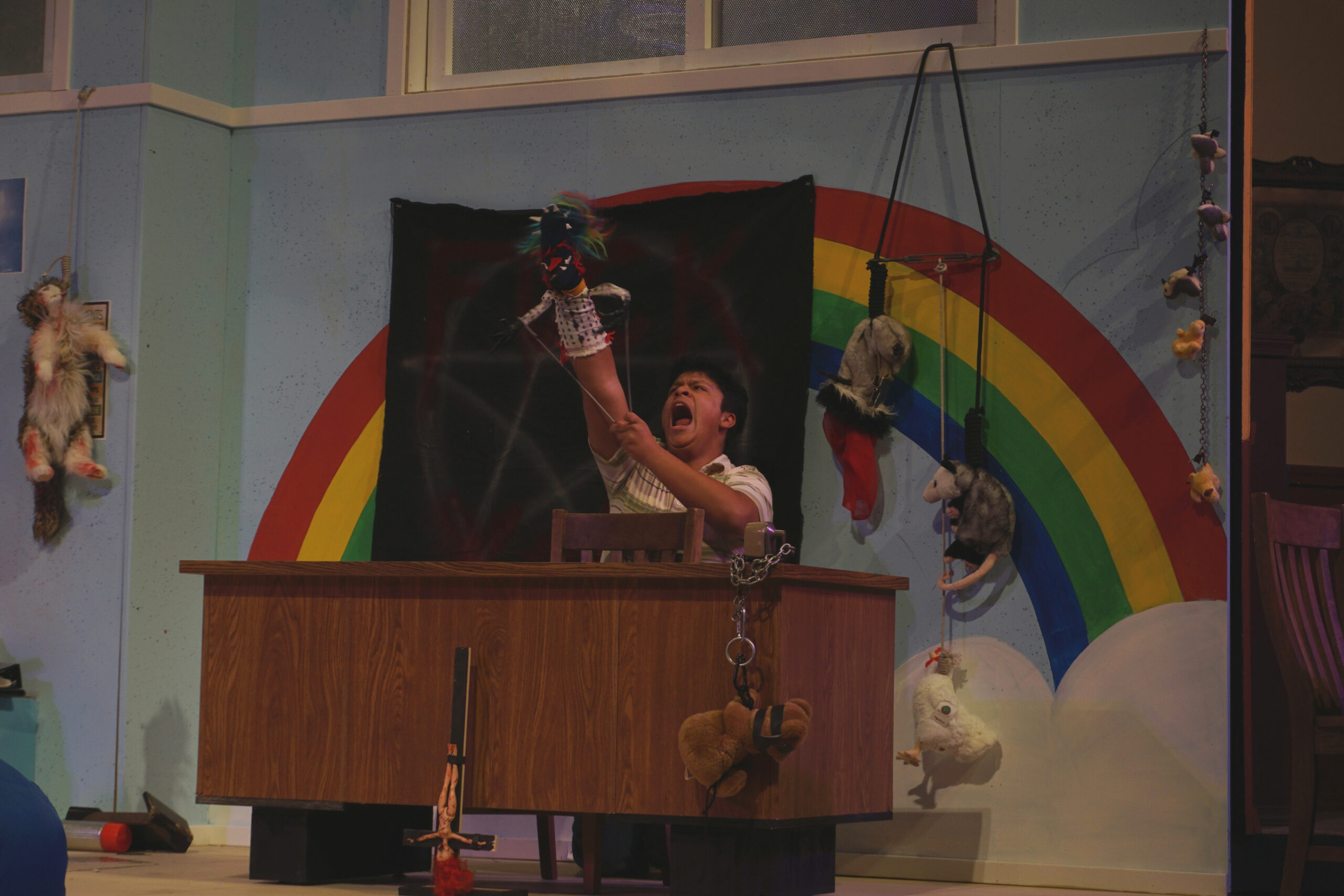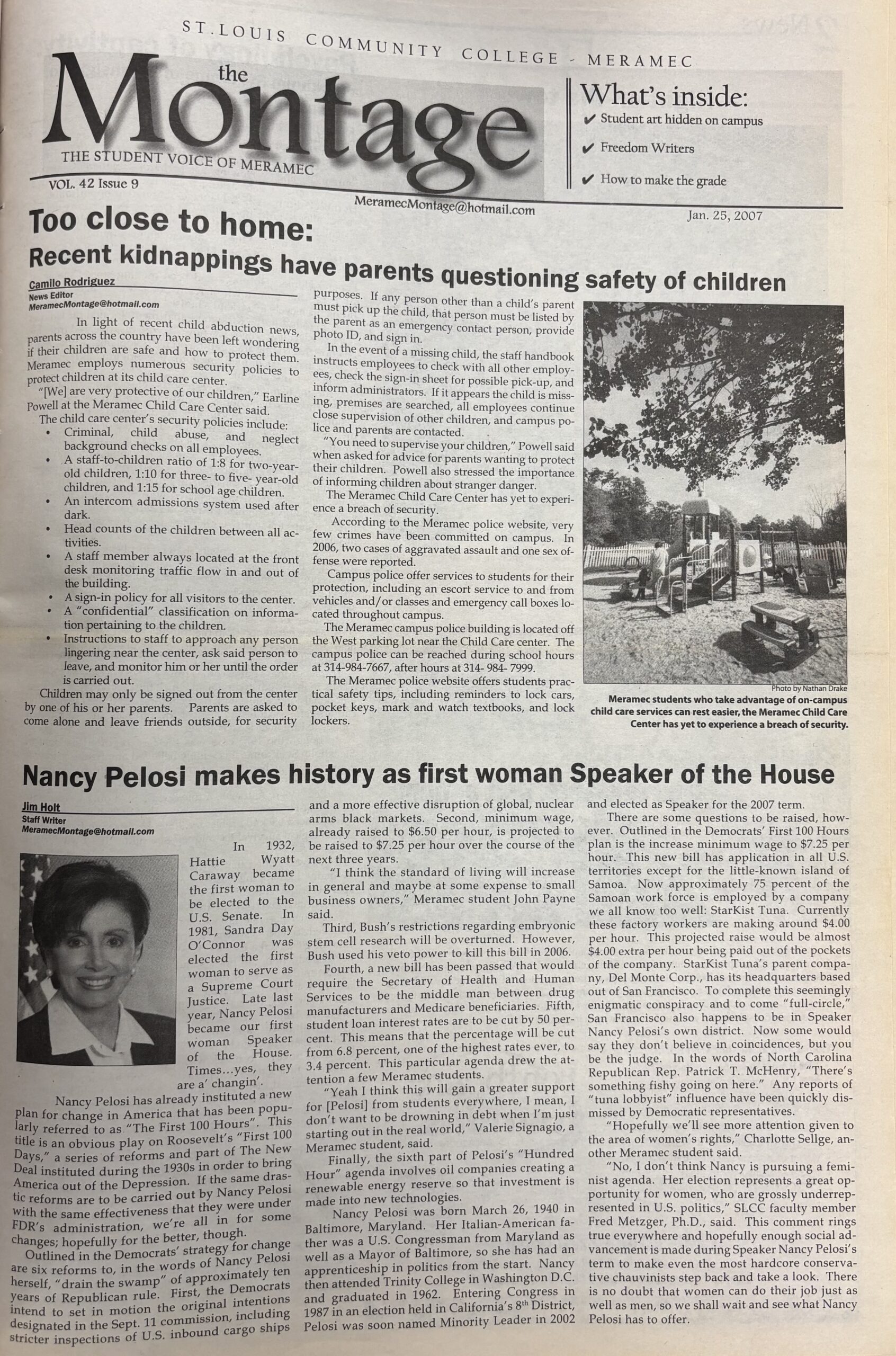Students design tiny houses as public service project
 By: Marie Schwarz
By: Marie Schwarz
Managing Editor
At the beginning of this semester, students of Associate Professor Erin LeClerc asked her, “When are we ever going to be designing a tiny house [once we are interior designers]?”
They asked LeClerc, program coordinator of the Interior Program at St. Louis Community College-Meramec this question because she had just introduced one of the semester’s projects: designing a tiny house.
“As designers it’s not about designing large homes, it’s about figuring out problems,” LeClerc said. “And your problem is to design a house in less than 200 square feet and give them everything that they need to be sufficient.”
LeClerc and her students partnered with the City of Chesterfield and Habitat for Humanity St. Louis, an organization that focuses on providing affordable and efficient housing. Together, they are in the process of building an ecological and portable showroom for vendors, LeClerc said.
While LeClerc and her students provided the design, the City of Chesterfield is coordinating the project with the vendors and Habitat for Humanity St. Louis is building the home, Jack Martinez said, who works for the Parks and Recreation and Arts Department of the City of Chesterfield.
Martinez came up with the idea over the winter, he said.
“I thought it would be a great way for businesses in Chesterfield to advertise,” Martinez said. “Opposed to just getting a little sign, I thought we could build them and display them.”
Shannon Sample is one of Meramec’s interior design students. “I personally loved that we got to do something that was one, different, and two, real world,” Sample said. “Many of our projects are interesting, fun and similar to real world scenarios that we may encounter one day, but to actually have a project this different was exciting.”
Harper Zielonko, resource development relationship manager of Habitat for Humanity St. Louis, is involved with the building of the tiny house project.
“[Habitat for Humanity is] kind of serving as a general contractor,” Zielonko said. “We are putting all the inner workings together so that any of the specialty contractors — like putting in cabinets or the plumbing system or the electric — we will help to facilitate that, so we can ensure everything is running smoothly and comes up to a general code that will be very livable.”
Besides the limited space, integrating the concepts of sustainability and self sufficiency within the design were challenging, LeClerc said.
“We have solar panels and composting toilets and stuff like that, so you don’t have to be connected to anything,” LeClerc said. “Basically you can be out in the woods on your own. And this tiny house doesn’t have to be connected to central electricity and plumbing.”
Furthermore, the tiny house had to fit on an 18-foot trailer without becoming an oversized load. And of course it had to fit underneath bridges, LeClerc said. Additional considerations like balance and creative storage solutions were also important to take into consideration.
Therefore, the students spent a lot of time with research, LeClerc said.
“We watched a lot of shows on tiny houses,” LeClerc said. “[The students] also researched mobile homes; what type of materials can you use in a mobile home that’s gonna be on wheels.”
Despite initial concerns about designing a tiny house, the students got really excited about the project once they heard one design will be built, LeClerc said.
“When [the students] found out it was a competition, they were really excited and worked so hard to produce their best work,” LeClerc said.
The clients, Habitat for Humanity St. Louis and the City of Chesterfield, watched four presentations, and though they would have liked to take out the best elements of each project, LeClerc told them to pick one design to keep the dates of the timeline.
“We could see ourselves in any of them,” Zielonko said. “If we could have mixed and matched we would have created this Frankenstein of a tiny house.”
The group consisting of the interior design students Dalila Kahvedzic, Mendenhall and Sample won the not so tiny contest.
“This was a really fun project for us,” Mendenhall said. “It’s not very often we get to design for a real client, but then to also have it be a project like a tiny house made it so unique and special. We had to research and think a lot about the best way to make this tiny space functional, but also keep it feeling open and beautiful. I think we were able to achieve this by focusing a lot of attention on natural lighting and being very selective in our finishes. Because the space is so small, every detail really matters!“
Zielonko said she was impressed with all designs, but the chosen design was very thoughtful on every aspect.
“We really liked the flow of the home,” Zielonko said. “We really thought that this design really did the best job of giving the owners the most livable space.”
Zielonko said that the tiny house will be built within the next month. It will be displayed at Chesterfield Amphitheater until the end of the summer season and will be raffled off, Zielonko said.
“We will sell a limited number of tickets, 1,500 tickets, for a $100 apiece,” Zielonko said. “In the end there will be a randomly generated drawing and someone will take home a tiny home.”
LeClerc said it was important to show her students the impact of this tiny house project.
“It’s not just a tiny house that you’re designing; the proceeds are gonna help build a home for someone in need,” LeClerc said.











